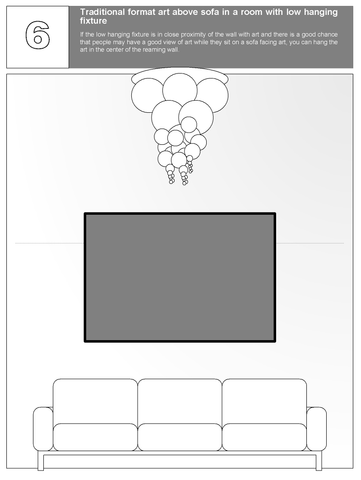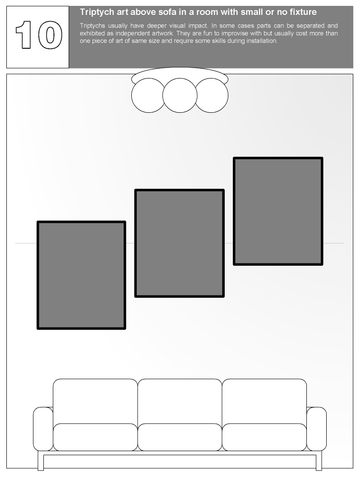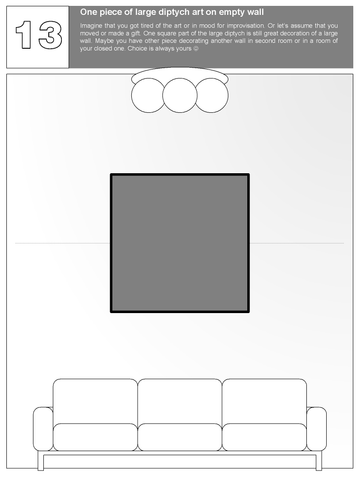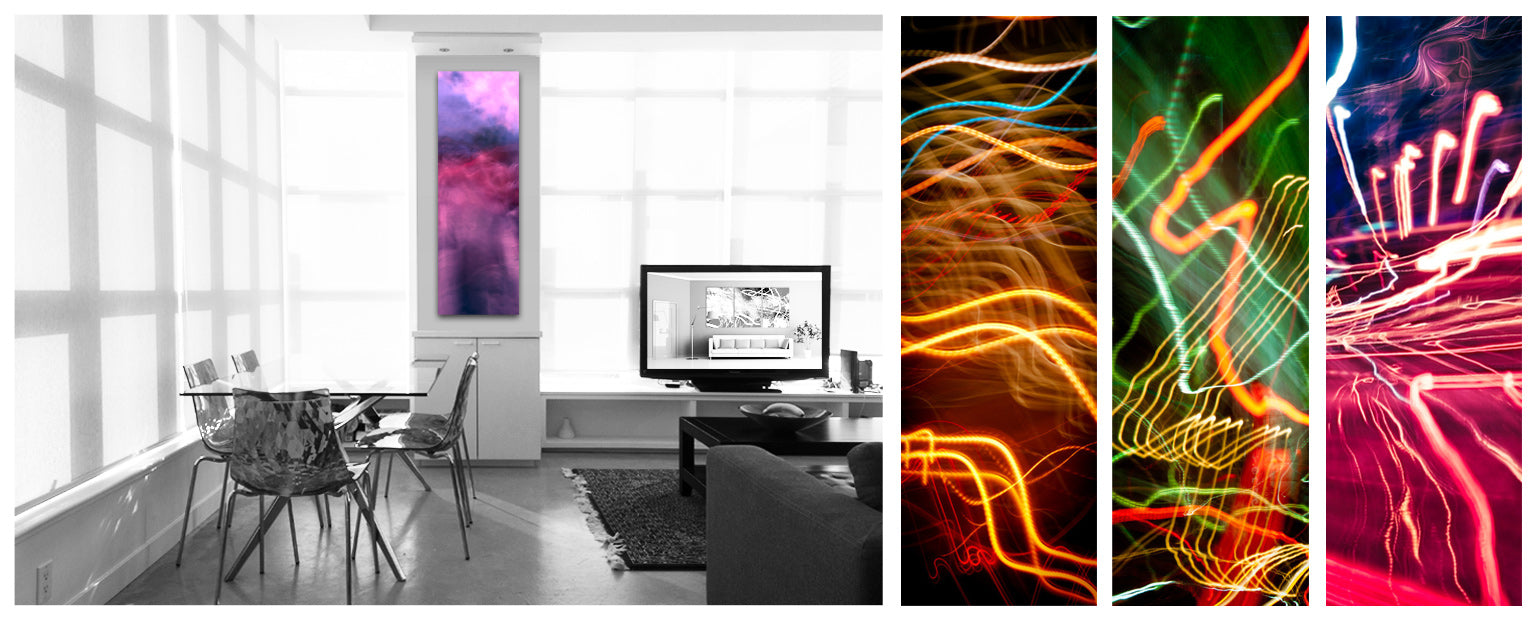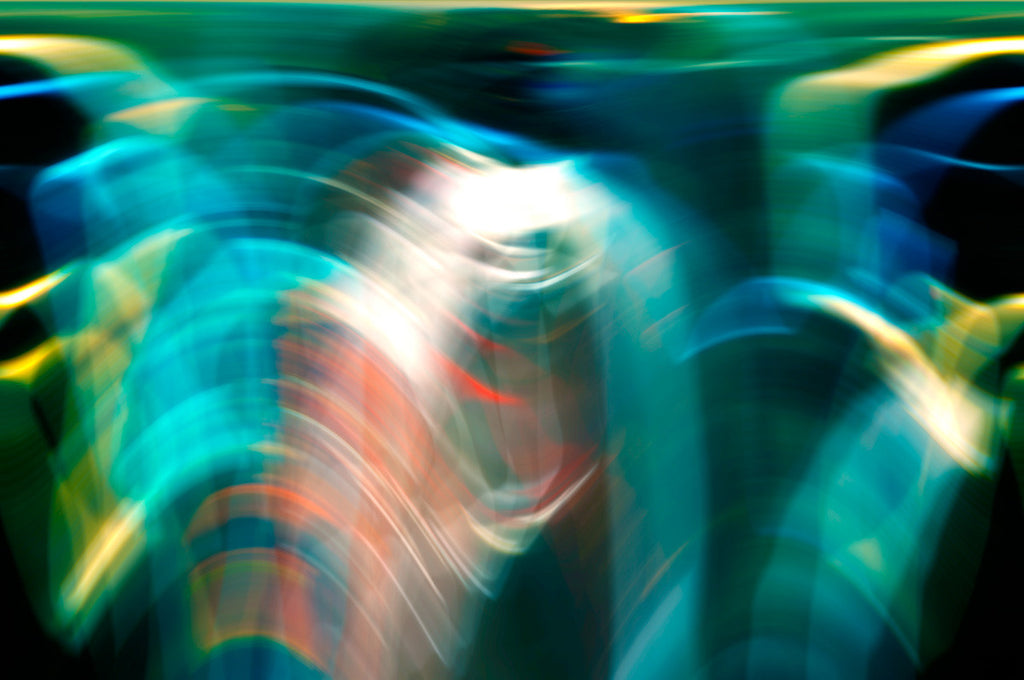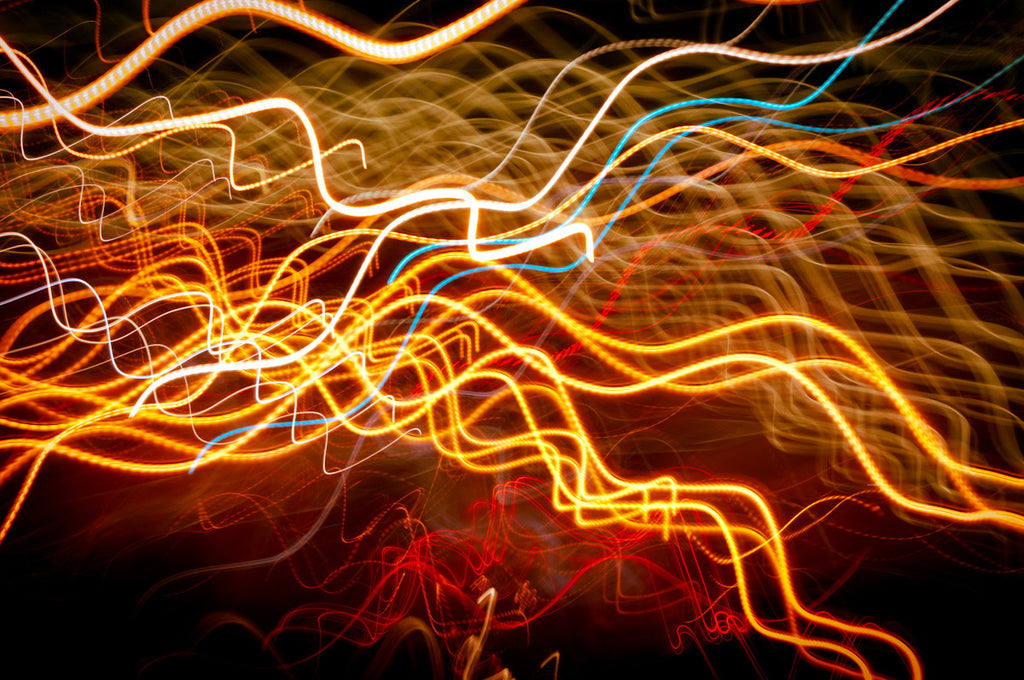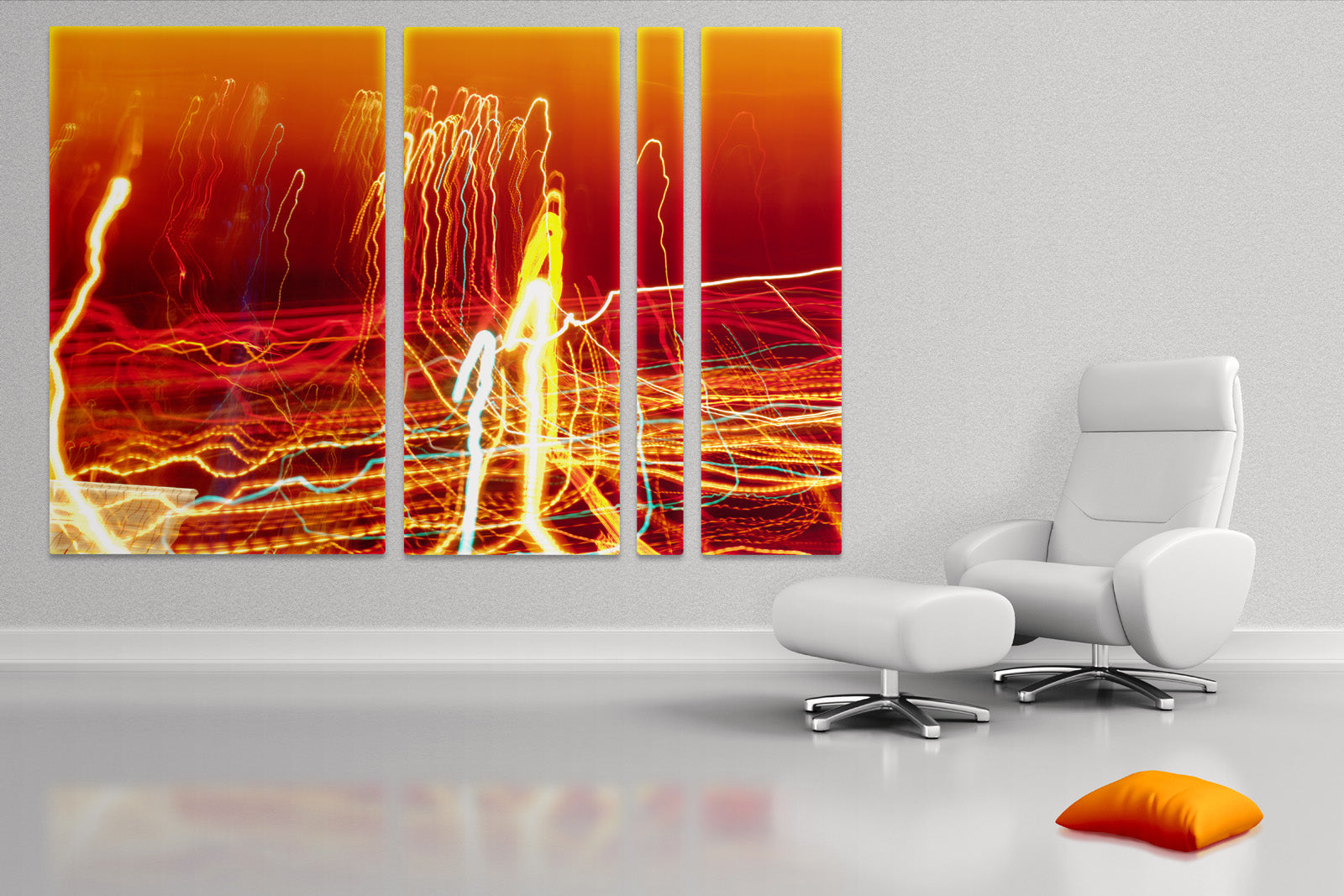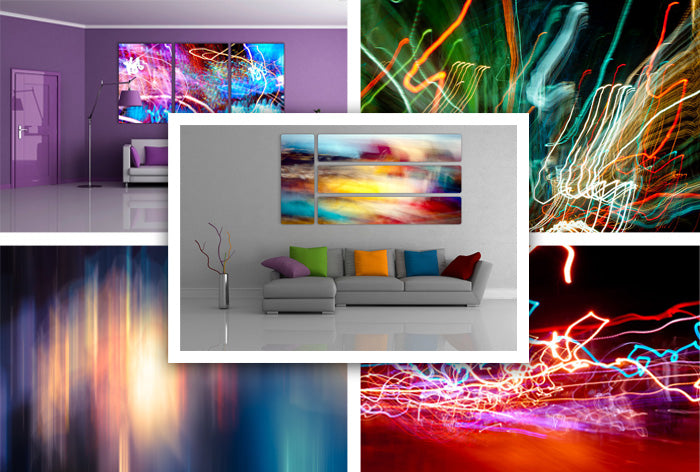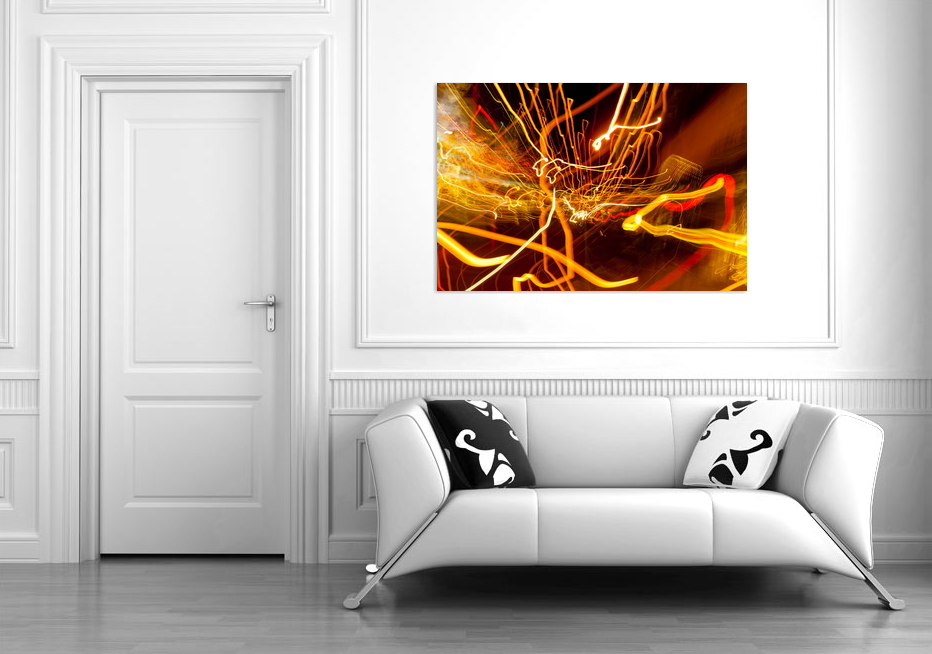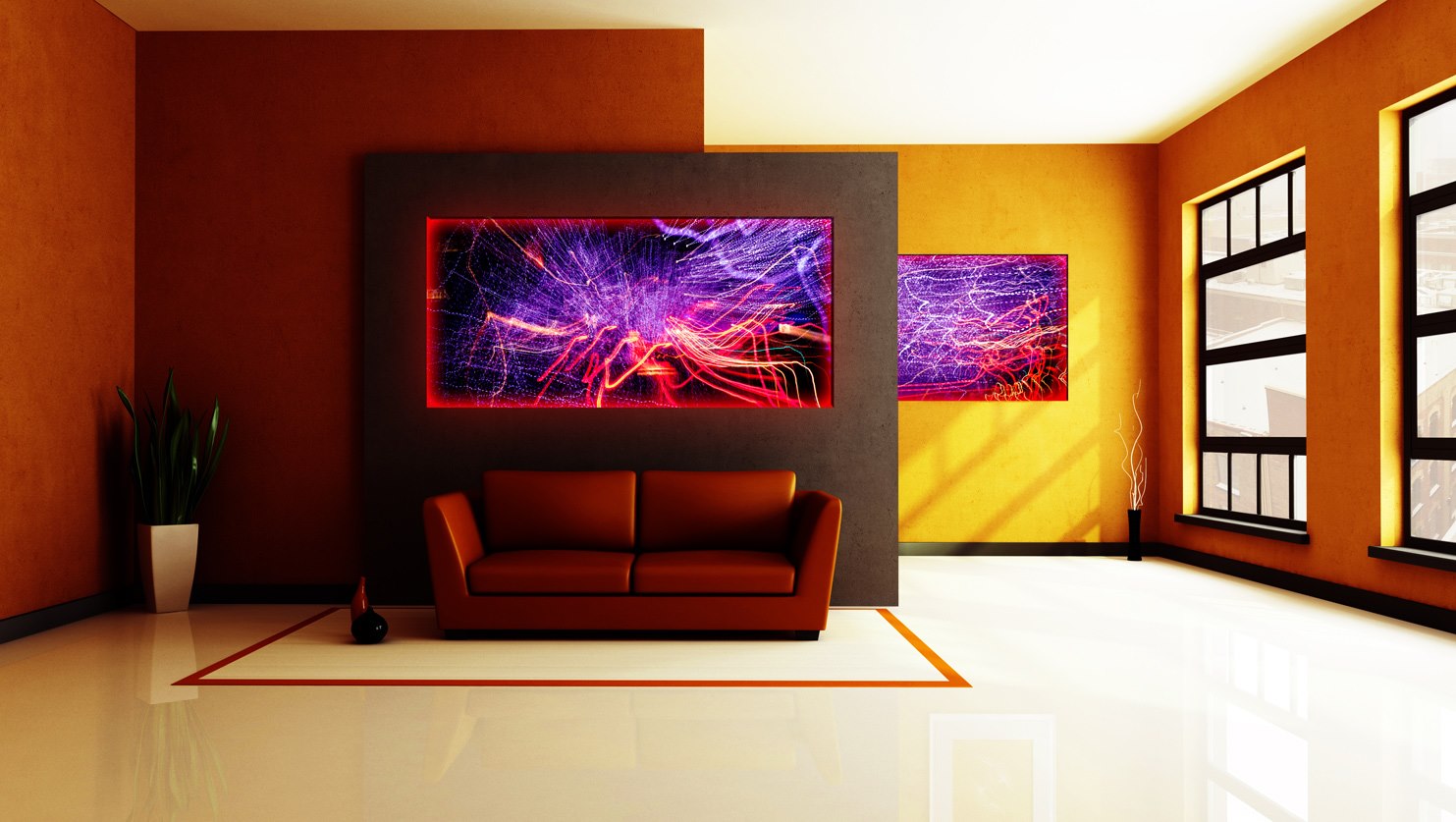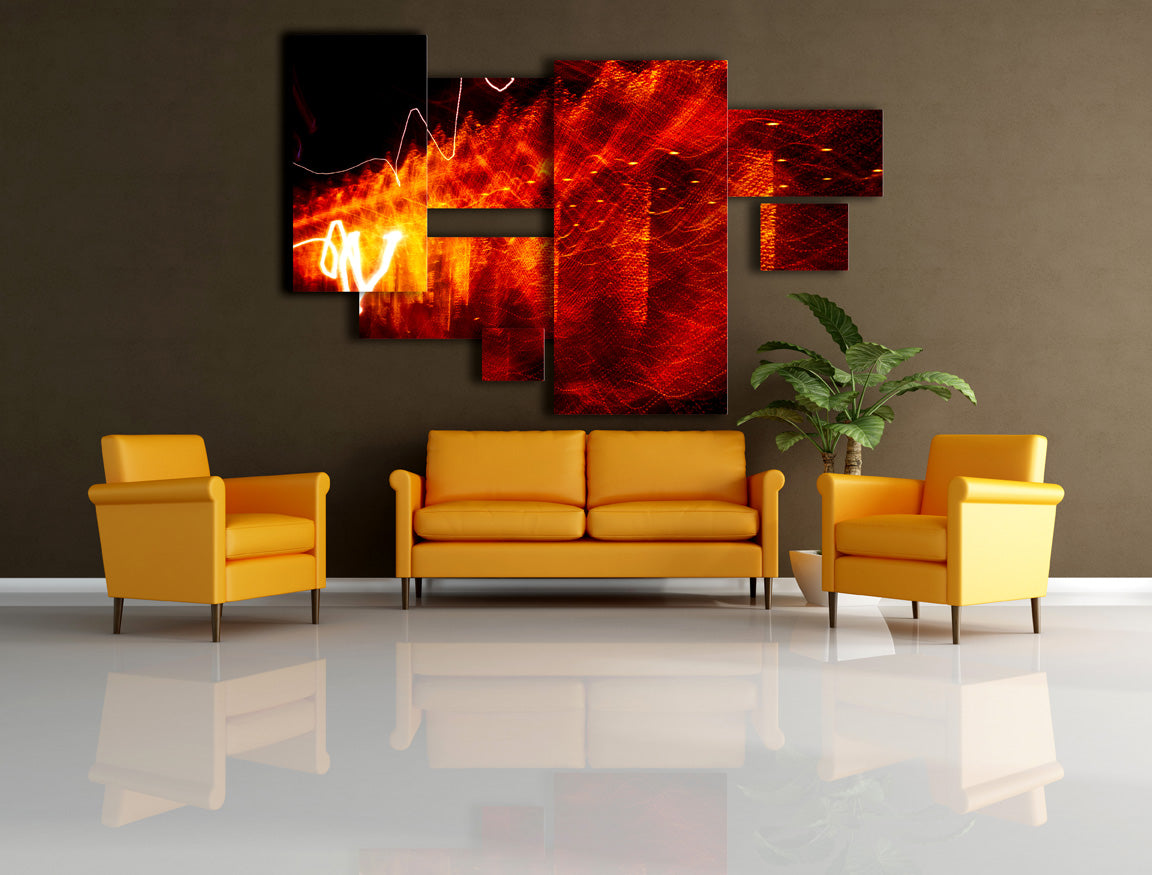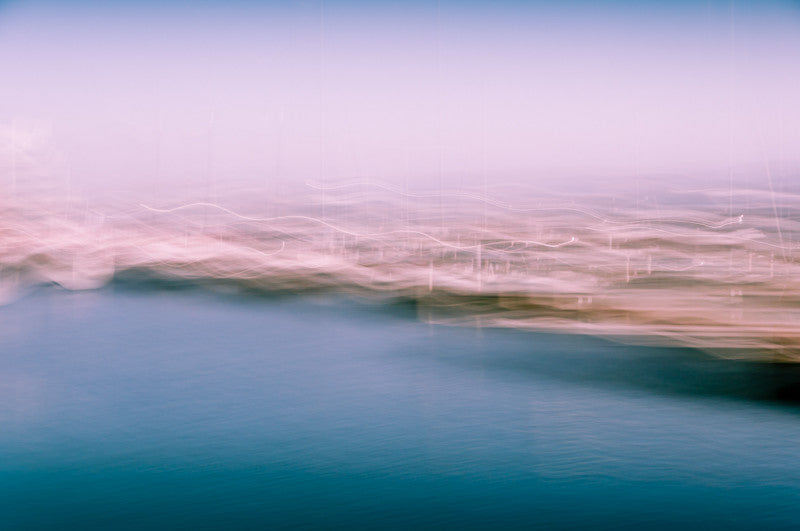How To Choose Right Size Of The Art For Your Room. Part 2
This is a second part which continues my earlier post about choosing right art format and high level installation instructions.
Let’s assume that you plan to hang an artwork in room with low hanging fixture like on slide #6. There may be a case when the room is not large or you plan that artwork will be visible from all angles. Consider hanging art in the center of the wall space formed by nearby tall furniture such sofa or chairs and lower edge of the fixture. Geometry of the available wall is a long rectangle. I suggest that art format follows the same proportions like on slide #6. Placeholder for the art on that sketch is about 50x33”. The picture aspect ratio is 3:2 which used by many photo cameras and canvas producers. Working with art sizes around 45x30” let you choose from wider range of art. The disadvantage of this size is that it does not surprise anybody and looks rather plain.
Wide panoramic art like on slide #7 let’s you take advantage of all wall length and make a design statement. This format is perfect choice for landscapes and night city photos. Light from fixture will illuminate artwork but will not block the view.
But what if room fixture is too low like on slide #8? In this case lights will be blocking the view or art from almost any angle. I suggest take advantage of this arrangement and incorporate low hanging lights into art decoration project. Artwork and fixture become whole composition and ideally need to compliment each other. It’s not ideal set up as for me but I guess there can be reasons why you wouldn’t want to change the light settings. As for the size and format of the art, think as you have whole wall and go from there. In this example I used 52x52” square placeholder. Or you can consider smaller artwork from my Squares collection. The largest size is 40x40".
Panoramic artwork is fun and can be real eye candy. In some cases long format can present transportation and handling issues for residences in old buildings with narrow staircases and small elevators. Slide #9 demonstrates panoramic placeholder filled with 3 pieces. They are definitely easier to handle and ship but require more work in crafting and hanging so it will be a bit more expensive at the end. On bright side each piece can be independent and have its own value, historic and aesthetic purpose or all 3 can form a triptych from same artist. With 3 pieces to decorate with you virtually have 3 times more freedom. Slide #10 illustrates how pieces from triptych take advantage of whole wall or staircase. If the subjects for all pieces are interconnected this arrangement will create an illusion of much larger artwork. This look is sophisticated but requires planning and close collaboration with artist. The result will not disappoint you.
Let’s imagine that we need to decorate large wall with no visible furniture and small or not significant lighting from the ceiling like on slide #11. This can be hallway in public space, feature wall in an office or your wall in high ceiling basement. This will be a perfect space for large triptych. Try to get all pieces of the same size. It will be much easier to balance the distance between them. Composition and each piece sizes will depend on the overall wall size. Remember to hand triptych not too much higher than average person’s eye level.
Triptychs are my favorites. Playing with distance between pieces you can set visual rhythm and amplify the artwork message.
One thing to remember choosing triptych is that it looks great if each piece is rather tall with proportions 1:2 and taller. Otherwise there is a risk that composition hangs too low.
In this case consider diptychs like on slide #12. Each piece is a square or can be close to square. Together they will form perfectly balanced rectangle. They can be leveled or not depending on composition.
Imagine that you got tired of the art or in mood for improvisation. Or let’s assume that you moved or made a gift. One square part of the large diptych is still great decoration of a large wall like on slide #13. Maybe you have other piece decorating another wall in second room or a room of your closed one. Choice is always yours.
In last two posts I described 13 slides explaining how to choose artwork hanging height, possible decisions about size and format of the art.
My last suggestion is this: when it comes to contemporary art remember that large is always better than small :)

